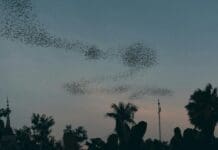This post is also available in:
 עברית (Hebrew)
עברית (Hebrew)
Updated geospatial data is needed more and more in order to enhance the situational awareness of soldiers at the field. One World Terrain (OWT) is a US Army research effort that seeks to provide a set of 3D global terrain capabilities and services that can replicate the coverage and complexities of the operational environment.
The OWT software was intended to build 3D battle maps for training simulations. But an early version has already proven so useful that special operators are using it to plan actual missions.
“Many SOF elements — Naval Special Warfare and also Army SOF — are using it,” as well as some regular Army and Marine Corps units that are also using it for advance planning and map exercises, as the head of the Army’s Synthetic Training Environment task force, Maj. Gen. Maria Gervais, told breakingdefense.com.
The operators use a tablet and special software to designate an area of interest, dispatch a drone to scan it, and then – in a matter of hours – automatically compile the sensor readings into a 3D map so detailed you can even distinguish different species of trees.
The 3D software lets operators plan potential routes of advance to avoid detection or match munitions with targets to limit collateral damage, Gervais said.
The ultimate goal for One World Terrain, Gervais said, is to provide detailed 3D maps of anywhere the US military might need to train, deploy, or fight. It would be a single database for use by all future Army training systems, in contrast to the 57 inconsistently compatible terrain formats used today.
The foundational layer for One World Terrain will come from existing detailed and carefully verified databases compiled by organizations like the National Geospatial Intelligence Agency and the Army Geospatial Center.
“That basic information kind of already exists, so we would bring it in and put our layers on top of it,” Gervais added — turning the 2D maps into 3D terrain complete with trees, buildings with mapped interiors, and underground areas like subway tunnels.
If a location a unit needed to study wasn’t already mapped in adequate detail, or if the area had been altered by new construction, natural disaster, or battle damage, a satellite or drone could be tasked to take a closer look and update the database.
It will take years of work to develop artificial intelligence powerful enough to process it and a wireless network robust enough to distribute it to units at bases and forward outposts around the world. “The future really is going to be about the ability to collect the data, process the data, use AI/machine learning as quickly as possible to help decision makers, and distribute it,” Gervais said.


























